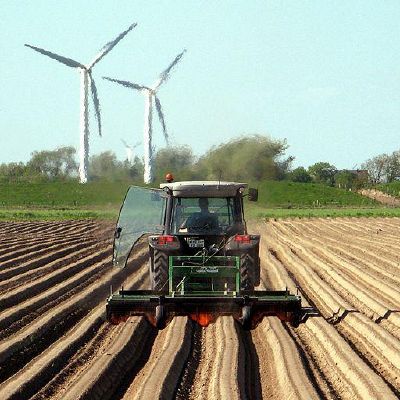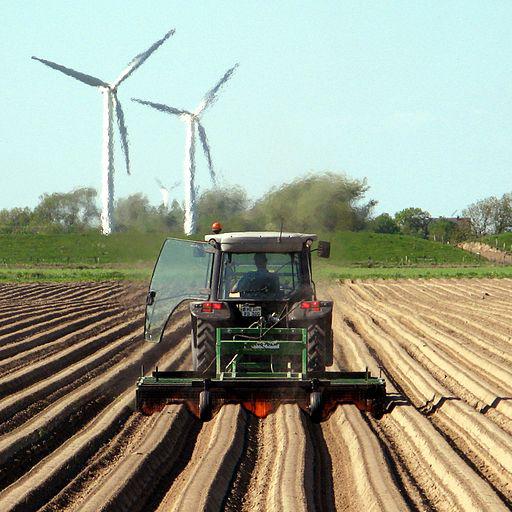 Weed management using heat
Weed management using heat

Thermal weeding is a physical weed control strategy that involves applying athermal shock at a high temperature (using a direct flame or infrared) over a very short exposure time (3 to 5 seconds ), causing plant cells to burst. This is an alternative technique to the use of glyphosate, particularly during intercropping.
Presentation
Characterisation of the technique
Means of implementation and conditions for greater effectiveness :
For all crops, burning is generally carried out before sowing or pre-emergence. Weeds must be germinated and developing to be affected (between the cotyledon and four true leaf stage).
Thermal weeding can be used for all weeds. However, for monocotyledons, perennials and weeds with a vegetative point at ground level (rosette weeds), effectiveness is limited when the stage is developed. In the latter case, two faster passes are more effective than one slow pass.
For optimum effectiveness, it is best to spray when there is no more dew. The soil may be damp, but there should be no wind.
Equipment :
There are three types of thermal weeding equipment :
- Ramp system (exposure of weeds to flames): open-flame thermal weeding works by heating plant tissue, without causing it to burn. The temperature obtained must be over 95 - 100°C and maintained for at least 0.1 seconds.
- Oven (using infrared rays) : No direct contact between flame and plant tissue with this system. Efficiency is the same, energy consumption is minimised, but the cost of the equipment is higher.
- Steam projector (used in non-agricultural areas).
In this system, the appliances run on propane (which has a pressure of 6 bars at 0°C, making it easier to use). They are fitted with burners with controlled and safe ignition, and supplied in the gaseous or liquid phase either by conventional propane gas bottles, or by a safe tank attached to the front of the tractor.
In the liquid phase: This provides direct and constant high power and faster forward speed. However, there is a greater risk of clogging for the user.
This system uses a liquid phase burner with an evaporator (more powerful and more constant, but because of its complexity, it is more expensive in terms of energy and maintenance).
Gaseous phase : If demand is too high at the nozzles, the liquid will not have time to become gaseous, which will lead to the formation of frost, rendering the appliance inoperative very quickly. Generally lower speeds and lower risks for users. In this case, a dual-suction gas-phase burner is used (to obtain a flame of 1400°C ; less expensive to purchase and maintain).
Settings :
It is important to set the machine and the forward speed correctly. The latter should be adjusted according to the type of appliance.
Boom height : The burners should be positioned approximately 15 cm above the ground. The aim is to adjust the height so that the blue flame reaches the weeds.
Forward speed : depends on the machine used and the stage of development of the weeds. The more developed the weeds, the more heat will be needed and therefore the lower the speed.
Check settings : press the weed leaf between your fingers ; after releasing, the finger mark should be visible. If this is not the case, efficiency is insufficient and the forward speed should be reduced. If, on the other hand, the leaf is scorched or smoky, the speed of application can be increased.
Example of application :
On soya: thermal weeding at emergence and at the latest at the closed cotyledon stage (window of 1 to 2 days), then a currycomb harrow pass at the 2 single-leaf stage and finally a pass in combination with hoeing of the row and directed burning towards the base of the plants at the 3-4 leaf stage of the soya (in this case, false seeding is optional). Example taken from the ITAB sheet (see bibliography).
On onions: it is possible to intervene in the crop, at the butt stage, then from the stage when the first leaf falls to the start of bulb formation (see technical sheet 19 in the Vegetable Design Guide).
Technical information :
Ideally, you should apply early, when the crop is at its most resistant stage and the weeds are at their most sensitive stage (cotyledon stage).
The technique can be used for interseeding: The destruction of the last false seedling by thermal weeding is also practised because it does not cause any tilling of the soil, and therefore no germination of new undesirable plants.
Thermal weeding is less effective on creeping and/or deep-rooted plants such as dock, thistle, sow-thistle, dandelion or couch grass. Broad-leaved plants with shallow roots, such as plantain, are more easily controlled using this technique.
Application of the technique to...
Period of application On established crops
Spatial scale of application Plot
All crops : This technique cannot be applied across the board, but is mainly used on row crops(maize, soya, sunflower, beetroot, onion, garlic, carrot, etc.).
All soil types : Easily generalised, thermal weeding is an interesting technique given its effectiveness and above all its low soil requirements(moisture and structure). In fact, it is particularly useful where the soil cannot be worked, particularly if it istoo wet or too steep. This technique is therefore suited to regions and crops where this situation is common. Beware, however, of stony or cloddy soils.
All climatic conditions : Easily generalisable. Thermal weeding is an interesting technique because of its effectiveness and, above all, because of its low requirement in terms of weather conditions (no need for dry weather after weeding). So, unlike mechanical weeding, the weather window for intervention is much more favourable.
Regulations
Thermal weeding equipment is eligible for the PVE (Plan Végétal Environnement), which means you can receive investment grants. Similarly, several regional MAE (Agro-Environmental Measures ) can provide financial support for thermal weeding.
Effects on the sustainability of the cropping system
Environmental" criteria
Effect on air quality : Decreasing
Acidification : DECREASING
Phytosanitary emissions : DECREASE in the transfer of pollutants to water and air thanks to the reduction in herbicides.
GHG emissions : INCREASE
Particle emissions : VARIABLE
Effect on water quality : Variable
N.P. : VARIABLE
Pesticides : DECREASE
Turbidity : NEUTRAL
Effect on consumption of fossil fuels : Increasing
Consumption of fossil fuels : INCREASING
Consumption of phosphorus : INCREASING
Thermal weeding reduces the use of herbicides and therefore limits the risk of these products entering the air or water. On the other hand, there are emissions of carbon monoxide, carbon dioxide, sulphur andnitrogen oxides, particularly if the burners are poorly adjusted.
Agronomic" criteria
Certain organisms (soil flora and fauna in particular) are eliminated when thermal weeding tools are used.
The heat can injure useful animals crawling on the soil, such as ground beetles, earwigs, spiders and sowbugs.
However, on certain crops such as sunflowers, this technique can be used to weed the rows without herbicides (e.g. in organic farming).
Economic" criteria
Operating costs : Increasing
The cost of two passes is around 95 euros/ha for equipment (machine, gas and two tractor passes) and 32.4 euros/ha for labour (10.5 euros/hour and 1.5 hours for one pass over 1 hectare).
Mechanisation costs : Increasing
Need for specific equipment. According to the Rhône Alpes Chamber of Agriculture: a 3.2m, 6-row boom, 12 Primatech burners (312kg gas tank) costs €4,750; a 3.2m, 6-row boom + chassis, 12 Antargaz burners (275kg gas tank) costs €6,245.
Margin : Variable
Thermal weeding is relatively expensive(120 to 130 euros/ha), which is why it is mainly used on intensive crops(market gardening) or if the product is valued accordingly(organic farming).
Other economic criteria : Increasing
Fuel consumption:Increasing
Social criteria
Working time : Variable
Variable depending on the technique used, the stage of the crop and weeds, and the forward speed, generally between 3 and 6 km/h.
Increased working time due to narrow tool width and increased number of passes.
Peak period : Increasing
The number of passes required can be high. One pass can take 1.5 hours/ha. However, the intervention periods are wider than for chemical weed control.
However, technical knowledge is required, particularly with regard to the temperature sensitivity thresholds of crops and main weeds.
Risk of destroying beneficials
All the beneficial organisms that walk on the surface of the soil can be killed by the technique, in particular spiders, predatory and granivorous ground beetles, earwigs, staphylins, etc.
To find out more
- Practical guide to designing vegetable cropping systems that use plant protection products sparingly. Fiche technique T19. - Launais M., Bzdrenga L., Estorgues V., Faloya V., Jeannequin B., Lheureux S., Nivet L., Scherrer B., Sinoir N., Szilvasi S., Taussig C., Terrentroy A., Trottin-Caudal Y., Villeneuve F., Ministère chargé de l'agriculture, Agence Française pour la Biodiversité, GIS PIClég., Ouvrage, 2014.
- Le désherbage thermique, Repères technico-économiques, Légumes Plein Champ bio - Chapuis S. Technical brochure, 2010.
- Le désherbage thermique, Vetabio - Grebert D., Vercaigne J.-P., Delanote L., Legrand M. Technical brochure, 2009.
- Désherbage alternatif en maraîchage - Mesures curatives - Ferrier J-D. Chambre d'agriculture de l'Ain, Brochure technique, 2016 See page 8.
- Thermal weeding : an alternative to chemical weeding ? - Crenn J. Aujourd'hui & demain, n°95, Press article, 2008
Thermal weeding tool
Annexes
S'applique aux cultures suivantes
Défavorise les auxiliaires